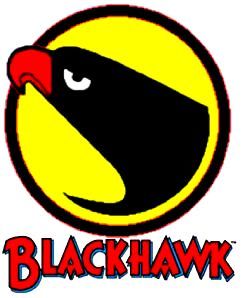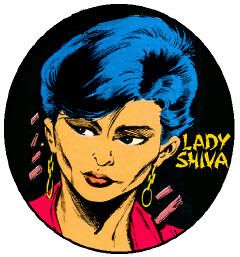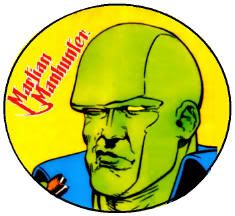Saturday, June 1, 2024
Comic Reader Résumé: Late June, 1986
I'm only going to briefly mention Power Man and Iron Fist #125. I remember it making an appearance at the school playground around 1989. It was a friend's copy, and a bummer ending to the series. Danny Rand gets beaten to death in his sleep after using up all his chi to save a child, a lame supporting character is to blame, and he promptly disintegrates from an energy imbalance. This leaves Luke Cage to go on the run when he gets wrongly accused of the manslaughter. It felt like Jim Oswley was taking out his frustration at Jim Shooter cancelling the modest selling title to make room for the New Universe, when a better use of those energies would have been to just roll the creative team over to a New Universe title. That line could have used the help.
In a real "you had to be there" moment, there once was a hot ticket reprint title in Classic X-Men #1. 1986 is considered by many to be the greatest year in the history of comics publishing, and was undoubtedly part of the last period where comic books had a significant cultural imprint with record sales to match. Nothing was hotter for longer than the X-Men, and this title wisely eschewed the original X-Men stories to begin coverage of the poorly circulated, never previously reprinted All-New, All-Different era. Aside from a few Len Wein issues, this was the start of Chris Claremont's record run with Dave Cockrum, and the arrival of the most popular team member, including the joining of Wolverine. Byrne and Perez were still the biggest names in comics, but Arthur Adams was the hottest and most influential new talent-- the truest herald and originator of the hyper-detailed "Image style" that would dominate the next decade of comics. He offered one of the best and most character-packed mutant covers ever, plus a frontpiece. Copious additional pages were provided by John Bolton, who also drew the back cover, and would soon provide a well loved series of back-up stories to the title. At a time when back issues were much more difficult to locate, and trade collections were all but nonexistent, this was the best and most economical option for readers to finally catch up on the X-Men story from the beginning... of the new team that people actually cared about.
I may have already mentioned that my brother had a few Madballs, plus the first issue of the Star Comics series. If you didn't know, these were simply rubber balls with weird or gross faces sculpted on them. I remember their being hollow, so you probably couldn't properly bounce or bat them. How much catch can you play? You might not think that there was a lot of narrative mileage in floating spheres, and Star initially only gave it three issues. I guess they proved popular enough to be revived seven months later as an ongoing series that continued the numbering of the mini. Marvel maybe should have kept the money and ran, because whatever life the property had was spent by the tenth issue.
I was more suggestible in my youth, and hadn't checked in with DC Comics for a minute, so i think I succumbed to the "NEW SERIES! FIRST ISSUE!" hype on Super Powers #1. I still loved the toys, but was at a loss with regards to the newer characters from later lines. The likes of Cyclotron, Golden Pharaoh, Orion, and Tyr were mysteries to me, and I frankly think I was a sucker for the named floating heads bookending the cover image. The interiors by Paul Kupperberg and Carmine Infantino were really bad, perhaps crystalizing my lifelong anti-fandom for these two men. This comic fed into my general avoidance of classic Justice League comics for nearly another decade, and did no favors for the relatively minuscule Fourth World circles. Don't get me started on Darkseid's seemingly perishing from his own Omega beams, or that awful hood ornament Orion was wearing.
I've mentioned a number of times on the podcast that I watched a lot of private investigator shows as a kid, especially the female led ones like Remington Steel and Moonlighting. For whatever reason, I didn't gravitate toward the rumpled old Columbo types, or cops in general, but the glossier self-directed detectives for pay... or at least well-heeled dilettantes like Hart to Hart. So naturally a seeming femme fatale with full bangs wearing haut leather goods while brandishing an automatic with the single word "STYLE" brandished above her letterboxed upper torso should grab my eye. I didn't immediately get the joke in the name Dakota North, nor did I ever really "get" the book itself. I want to say it turned up during its brief and surprisingly sporadic run somewhere in my orbit, whether newsstand or bookstore. On the surface, it was the kind of book that I'd want, but then I'd flip through it and put it back. I want to say my brother had an issue at some point, and I believe I bought a discounted "scratched and dinged" copy at the comic store that I went to right before leaving for Nevada. I think, but am not certain, that issue was #3. The close-up of Dakota aiming her piece seems the most familiar of the covers, as does the splash of her intolerably smug younger brother Ricky touring the Eiffel Tower with a gal pal. I was old enough to see the appeal in the off-kilter cartooning of Tony Salmons, but I still gravitated more toward the flashy than the artsy, and Kyle Baker always had a stronger brew for this particular approach. If you have to choose between a collection of Dakota North or Why I Hate Saturn, you pick Saturn every time. To my knowledge, this series was Martha Thomases only writing credit, and I understand that she struggled with the violence required by the assignment. You would think that would mean the scripts would favor the characterization, but I couldn't get a feel for any of these people. It all seemed obtuse to me-- unsure and at odds with itself. So if anything, I favored the wild action and mild cheesecake where the art broke lose of the unengaging story. Like I said-- I tend to flip through issues when I come across them in dollar bins-- there's something there, but seemingly not enough for most audiences. I would encounter a better and earlier handling of this character type in Collins & Beatty's Ms. Tree, another Marauder Comics quarter pull.
Someone on social media recently tagged me on the announcement of a crowdsourced compendium of the Marvel G.I. Joe comics that was funded in six minutes and had over a million dollars in the kitty at last count. The other person tagged was Ryan Daly, who has often appeared on , if not outright co-hosted, Joe podcasts. He collects Joe stuff and is keeping up with the modern Skybound Energon Universe stuff, like seemingly everybody else. That made sense. It was the me part that I didn't get. I haven't read a Joe comic since the Devil's Due run first started, and while I retain some mild nostalgia, my fandom feels like it happened in another lifetime. But then I remembered this podcast, which has consistently featured Joe content. I talk about Secret Wars being the first series that I collected every month from when I started with #3 until its end, or how Dreadstar & Company was the first book I had a complete set of. Or how I followed Uncanny X-Men to some degree for over a decade from January of '83, and what a formative series that was for me as a person. But before that, I bought action figures, especially G.I. Joes, and I've been talking about the animated commercials and TV series, and buying the comic more months than not from #11, and here we are at #51, plus Yearbooks and now we're launching a spin-off series. As much as I feel this book is in my rearview mirror, especially the rah-rah Real American Hero politics, the paper trail surely indicates that I was a much more devoted fan of this franchise than any other in my earliest years of collecting.
And so we come to G.I. Joe Special Missions #1, previewed in #50, adorned with a dynamic Mike Zeck cover, spotlighting... um... I dunno. Snake-Eyes is in the background, one of two Joes scaling the side of a ship while firing Uzis. They're both in modified scuba gear, so from the colors and flat top I guess Duke? But his hair's more orange than blonde, and he just doesn't "read" as Duke, especially since a more iconic Duke figure is in the corner box for comparison. Neither is in the actual comic, which is a sea adventure mostly involving The Baroness. The art didn't exactly blow me away, and my memory is of seeing it in a three-pack at a K-Mart that I did not pick up. I don't recall if I'd passed on it at the newsstand, probably not helped by it's continuing into the next issue, or if I decided against the book interiors unseen at the department store. What I can say is that this was maybe the first chink in the armor of my Joe collecting period, and it seems given the choice, I got an X-Men pack instead.
My experience of Howard the Duck up to this point was mostly in passing. He'd been a big fad in the 1970s, especially during his Pat Paulsen-aping mock presidential run. There were plenty of period Marvel house ads for subscriptions; the magazine; the Treasury Edition. But in terms of actual comics read, it was just the second issue at my uncle's friend's house with the inset bookshelves from which I modeled my own current and long desired set-up. And to be honest, that's still going to be it, because I fished the weird, years-belated Howard the Duck #32 & 33 out of the Marauder Comics quarter bin in 1989. Instead of being decent human beings about it, the final issue of the original run came nearly a year after the previous one, and that was over six years after the real finale from 1979. Worse, it teamed Howard co-creator Val Mayerik with some unknown, rather than offer Steve Gerber the work. It was a one-off, rags to riches to rags story to meekly support the upcoming movie, distinguished only by tardiness and admittedly one of the best ever Howard covers by Brian Bolland. That'll do, duck. That'll do.
The Incredible Hulk and Wolverine #1 was another one of those weird newsstand outliers that cost a whopping $2.00 and was extra length on sturdier (but non-Baxter?) stock. It had a new wraparound cover by John Byrne, but the interiors were all reprints. Mainly, it was the two-part introduction of Wolverine by Len Wein and Herb Trimpe from 1974's Incredible Hulk #180-181. Also, and much rarer, there was a new 6-page Hercules/Wolverine story from 1980's Marvel Treasury Edition #26 by Mary Jo Duffy, Ken Landgraf, and most importantly, inked by George Pérez. Nowadays, all three of these stories have been reprinted many times over, including a full reprint of this edition in a squarebound version with a new Trimpe cover in '89. However, in 1986, this was the first time these stories had ever been made available again, much less in a relatively affordable upscale format on the newsstand. While it may not have been held in the same esteem as Phoenix: The Untold Story, I still prized this edition, especially the pages of back matter detailing the origins of the character, as created by Wein and artist John Romita Senior, including the design sketches. This may have been the first time I heard about Wolverine's distinctive mask flaps coming out of Gil Kane having screwed up on a cover, with the interiors made to match. I was somewhere near my peak Wolverine fandom, and aside from Marvel Age and the rare trade paperback, there wasn't a lot of opportunities to get that kind of education on the creative process.
Speaking of Marvel Age, our last stop this month is its second annual. The cover was a massive group shot of the main stars of the universe by Frenz and Sinnott, which was by necessity more crowded as a single page than Kerry Gammill's wraparound from the previous year. Starting with a reprint of a 3-page 1967 Lee/Kirby humor strip about themselves, we next got a highlight reel from Marvel's first quarter-century. Back then, "Marvel Comics" started in 1961 with the debut of the Fantastic Four, creating the illusion that a flush Baby Boomer could own every single Marvel Comic, and treating their wartime super-heroes from the series actually titled Marvel Comics as an out-of-continuity prototype. Next was Marvel A to Z, which was their own version of the Amazing Heroes Preview Specials, where they would give a few paragraph breakdown of each Marvel title's general course over the next half-year or so. Where the previous year, they'd blown a fat wad on 25 pages of original continuity storytelling, Marvel was tightening their belts to look more attractive for an upcoming sale. This time they only sprung for about 13 story pages to break up the text, plus some pin-ups with captions and dialogue balloons. The artists were generally lesser known than the 1985 crew, but Art Adams did a story page, and Walt Simonson a pin-up spread. Could you imagine a publisher paying for anything like this today? Anyway, either the New Universe titles weren't ready or, more likely, it was damage control for how lame they were coming out, but the only art for the upcoming line was one of Cynthia Martin's cosmic house ads of fuchsia lightning striking the Earth from outer space. It was still overall a nifty package, with a faux 1961 Marvel Age back cover by Richard Howell, but I still read my brother's copy.
Subscribe to:
Post Comments (Atom)

















No comments:
Post a Comment